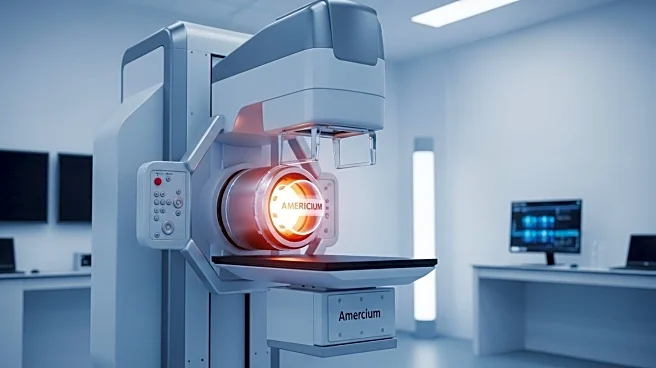What's Happening?
An innovator known as [Project326] has developed a passive X-ray imaging system that does not require a traditional X-ray tube or high voltage. This system utilizes dental X-ray film and americium 241, a radioactive material commonly found in smoke detectors, to produce images using gamma rays. Although not technically an X-ray, the images resemble traditional X-ray results. The process involves using twelve americium sources to achieve approximately 10% of the output of a conventional X-ray tube. The imaging process is notably slow, taking up to two days to produce a single image, such as that of an integrated circuit (IC). The machine's construction includes machined copper components, which require maintenance.
Why It's Important?
This development is significant as it offers a potential alternative for imaging in scenarios where traditional X-ray equipment is unavailable or impractical, such as in resource-limited settings or post-disaster situations. The use of readily available materials like smoke detectors for imaging could democratize access to diagnostic tools, especially in emergency situations. However, the slow imaging process and limited output compared to conventional X-ray machines may restrict its practical applications. The innovation highlights the potential for repurposing everyday materials for scientific and medical use, which could inspire further research and development in passive imaging technologies.
What's Next?
The next steps for this technology could involve improving the efficiency and speed of the imaging process to make it more practical for real-world applications. Further research might explore alternative materials or methods to enhance the gamma ray sensitivity of the film or increase the output of the americium sources. Additionally, there could be interest from scientific and medical communities in exploring the ethical and safety implications of using radioactive materials for imaging, particularly in non-traditional settings.
Beyond the Headlines
This innovation raises questions about the ethical use of radioactive materials in everyday applications and the potential for unintended exposure risks. It also highlights the ingenuity required to develop solutions in constrained environments, which could lead to broader discussions on sustainable and accessible technology development. The project may inspire similar initiatives that leverage common materials for scientific advancements, potentially leading to new paradigms in imaging technology.











